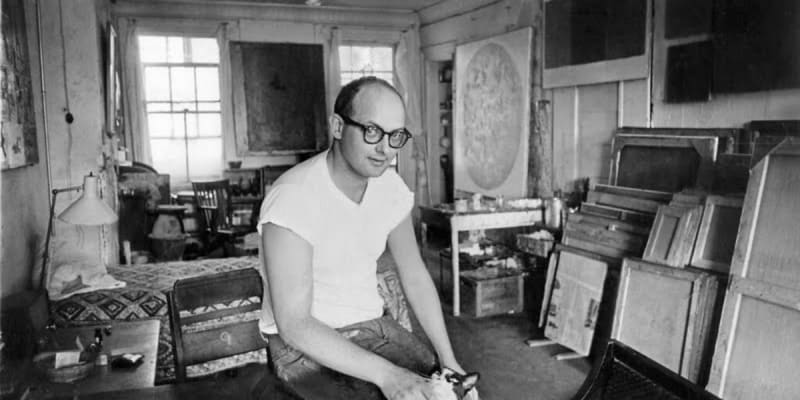Sol Lewitt 1928-2007
Please contact the gallery for other works available by this artist.
Sol LeWitt is widely-known as the founder of Conceptual and Minimalist art. He received his B.F.A. from Syracuse University in 1949 and later traveled to Europe before serving in the Korean War. He moved to New York and opened a studio on the Lower East Side in 1953. LeWitt spent the remainder of the 1950s studying at the School of Visual Arts, working at Seventeen magazine and as a graphic designer for an architecture firm. In 1960, he took a job as a night clerk at the Museum of Modern Art. His co-workers, Robert Ryman, Dan Flavin and Robert Mangold, were also artists interested in Minimalist ideas.
Minimalism strips an object to its bare essentials and contains no meaning beyond itself. As an artist, LeWitt simplified Minimalism further by favoring the idea of the process over the resulting object. LeWitt stated, "When an artist uses a conceptual form of art, it means that all of the planning and decisions are made beforehand and the execution is a perfunctory affair. The idea becomes a machine that makes the art." Prior to creating each of his "structures," he started by designing two-and-three-dimensional geometric drawings known as Wall Drawings.
In addition to being an artist, LeWitt was also an avid collector. Throughout his lifetime, he accumulated over 9,000 works of art by his contemporaries as Carl Andre, Gerhard Ritcher and Donald Judd. The Sol LeWitt Fund for Artists Works was established upon the artist's death in 2007. The foundation gives generous donations to support public art in New York.
LeWitt's work is featured in the permanent collections of the Tate Modern in London, the Van Abbemuseum in Eindhoven, the National Museum of Serbia in Belgrade, the Centre Georges Pompidou in Paris, the Hallen für Neue Kunst Schaffhausen in Switzerland, the Australian National Gallery in Canberra, the Guggenheim Museum in New York, the MoMA and the National Gallery of Art in Washington D.C.
Related Categories: Minimalism, Conceptual Art, Art of the 1960s, Large-Scale Sculpture, Post-War American Art, Intaglio, Etching/Engraving, Sparse, Hard-Edged, Generative Art.





